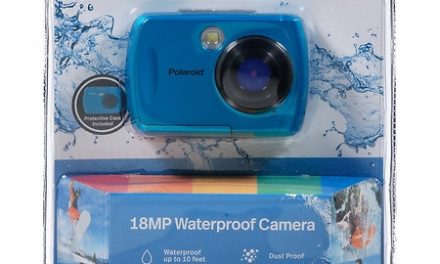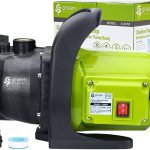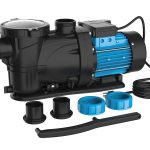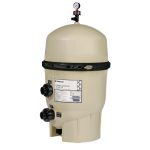Change pool filter sand when it becomes dirty or worn out typically every 5-7 years. Dirty pool filter sand can lead to poor water quality and reduced filtration efficiency.
Regular maintenance and awareness of the condition of the pool filter sand are necessary to ensure optimal pool performance and cleanliness. A well-maintained pool filter is essential for maintaining clean and clear pool water. Over time, pool filter sand accumulates debris, contaminants, and oils from the water, affecting its effectiveness.
If left unchanged for too long, dirty or worn-out pool filter sand can lead to inadequate filtration, reduced water clarity, and potentially cause damage to the pool equipment. Regular inspection and replacement of pool filter sand every 5-7 years will help ensure that your pool operates efficiently and maintains sparkling clear water.
Signs It’S Time To Change Your Pool Filter Sand
Cloudy or turbid water is a clear indicator that it’s time to change your pool filter sand. Increased pressure on the gauge is another sign that your filter sand needs to be replaced. Poor water circulation is yet another indication that a sand change is necessary for your pool filter.
These issues can occur over time as the sand particles become worn out and ineffective at filtering debris from the water. By replacing the filter sand, you can restore the clarity and cleanliness of your pool water, ensuring a safer and more enjoyable swimming experience.
Regular maintenance and monitoring of these signs will help you determine when it’s time to change your pool filter sand to maintain optimal filtration performance.
How Often Should You Change Your Pool Filter Sand?
Pool filter sand should be changed based on several factors. The recommended timeframe for sand replacement is approximately every 3-5 years. However, this can vary depending on factors such as the quality of the sand, the size of the pool, and the amount of debris that enters the filter.
If your pool consistently has high usage or excessive debris, you may need to change the sand more frequently. On the other hand, if your pool is rarely used or you have a low level of debris, you may be able to extend the lifespan of the sand by implementing proper maintenance techniques.
Regularly backwashing and rinsing the filter can help remove trapped particles and extend the life of the sand. Additionally, using a pool cover when the pool is not in use can also help reduce the amount of debris entering the filter.
Remember that regular maintenance and monitoring of your pool filter sand is crucial to ensure optimal filtration and water quality.
Step-By-Step Guide To Changing Your Pool Filter Sand
Changing your pool filter sand is essential for maintaining clean and clear pool water. Here is a step-by-step guide to help you through the process. Start by turning off the pool pump to ensure safety during the procedure. Next, release pressure from the filter by opening the air relief valve.
After that, remove the old sand from the filter tank using a scoop or a vacuum. Take this opportunity to clean the filter tank thoroughly before adding new pool filter sand. Once the tank is clean, carefully pour in the new sand, making sure not to overfill.
After adding the sand, check the sand level to ensure it is at the correct height. Finally, reassemble the filter system, making sure all the components are properly secured. Following these steps will help you maintain a healthy and efficient pool filtration system.
Common Mistakes To Avoid When Changing Pool Filter Sand
Changing pool filter sand is crucial for maintaining clean and clear water in your pool. One common mistake to avoid is overfilling or underfilling the filter tank, as this can affect its effectiveness. Another mistake is using the incorrect grain size of sand, which can lead to poor filtration.
Neglecting regular maintenance and cleaning is another critical error that can result in clogged filters and reduced filtration efficiency. It is important to follow the manufacturer’s guidelines on when to change the filter sand, usually every 3-5 years, depending on usage.
Regularly inspecting the sand for signs of wear and tear, such as clumping or channeling, is also recommended. By avoiding these common mistakes and properly maintaining your pool filter, you can ensure optimal filtration and enjoy crystal-clear pool water all summer long.
Frequently Asked Questions About Pool Filter Sand Replacement
Changing pool filter sand is necessary when it becomes worn out or dirty. Reusing old sand is not recommended because it loses its effectiveness over time. After replacing the sand, backwashing the filter should be done regularly for optimal performance.
It is not necessary to replace the entire filter, usually just the sand is sufficient. Regular maintenance and replacing the sand every 7-10 years will ensure that your pool stays clean and clear. Make sure to follow the manufacturer’s instructions for your specific filter type when replacing the sand.
Additionally, proper filtration and maintenance are key to keeping your pool water clean and safe for swimming.

Credit: www.laidbacktrip.com
Frequently Asked Questions On When To Change Pool Filter Sand?
How Do You Know When To Change Sand In Pool Filter?
Pool filter sand should be changed every 5-7 years to ensure proper filtration. Over time, the sand particles become compacted, losing their ability to effectively trap debris and contaminants. This can result in poor water quality and reduced filter performance.
Signs that it’s time to change the sand include reduced water flow rate, cloudy water, and increased pressure on the filter gauge. You can also check the sand visually for signs of deterioration, such as clumping or discoloration. To change the sand in your pool filter, first, turn off the pump and close the valves.
Then, remove the filter dome or lid and carefully scoop out the old sand. Rinse the tank thoroughly and add new pool filter sand, making sure to follow the manufacturer’s instructions for the correct amount. Finally, reassemble the filter and start up the pump to enjoy clean and clear pool water.
How Do I Know If My Sand Filter Is Bad?
To determine if your sand filter is bad, look out for these signs: 1. Backwash water in the pool: If you notice water from the backwash hose flowing back into the pool, it could indicate a problem with the sand filter.
2. Air in the pump: If there is excess air bubbles or a gurgling sound coming from the pump, it may point to a malfunctioning sand filter. 3. Sand in the pool: If you find sand particles in your pool, it means the sand filter is not effectively trapping debris and needs attention.
4. Water leaks: If you notice water dripping around the multiport valve, it could be a sign of a faulty sand filter. It is important to address these issues promptly to ensure optimal filtration and maintain the cleanliness of your pool.
Regular maintenance and inspection of the sand filter can help identify these problems early on.
How Long Should A Pool Sand Filter Last?
A pool sand filter typically lasts for about 5-7 years with proper maintenance and usage. Regular backwashing and proper chemical balance in the pool can help extend the lifespan of the filter. It is important to monitor the filter’s performance and look for signs of wear or damage.
If you notice decreased water flow, cloudy water, or particles bypassing the filter, it may be time to change the sand. Replacing the sand in the pool sand filter involves removing the old sand, cleaning the tank, and adding new sand.
Remember to consult the manufacturer’s instructions for specific guidelines. Keeping up with regular maintenance and replacing the sand as needed will ensure the filter’s efficiency and longevity.
How Often Should I Backwash My Pool Sand Filter?
Backwash your pool sand filter every 1-2 weeks or when the pressure gauge shows a 7-10 psi increase.
Conclusion
Changing your pool filter sand is an important maintenance task that should not be overlooked. Over time, the sand in your pool filter can become worn out and less effective at removing debris from the water. This can lead to poor water quality and potentially damage your pool equipment.
So, when should you change your pool filter sand? The general recommendation is to change your pool filter sand every 3 to 5 years, depending on usage and the quality of your water. However, there are some telltale signs that indicate it’s time for a change.
These include reduced water flow, cloudy water, and increased pressure on the filter system. By regularly monitoring and maintaining your pool filter sand, you can ensure optimal performance and extend the lifespan of your equipment. Don’t wait until your pool water looks dirty or your filter system is under strain.
Take proactive measures and change your pool filter sand when it’s necessary to keep your pool clean and sparkling all year round.
















